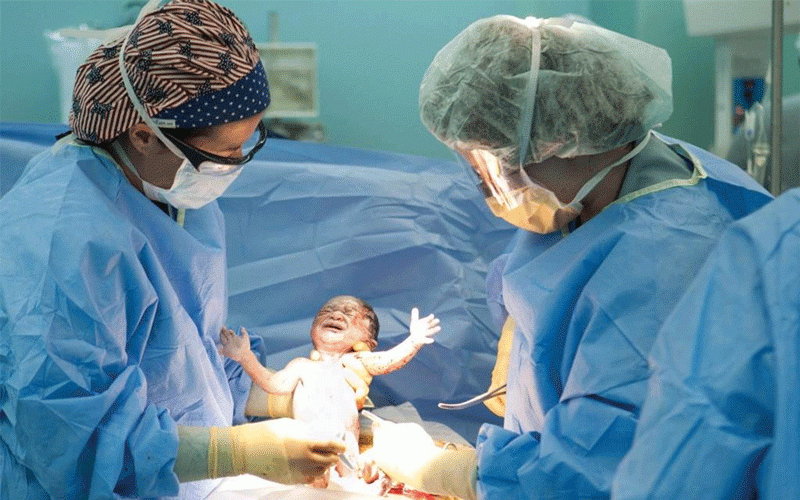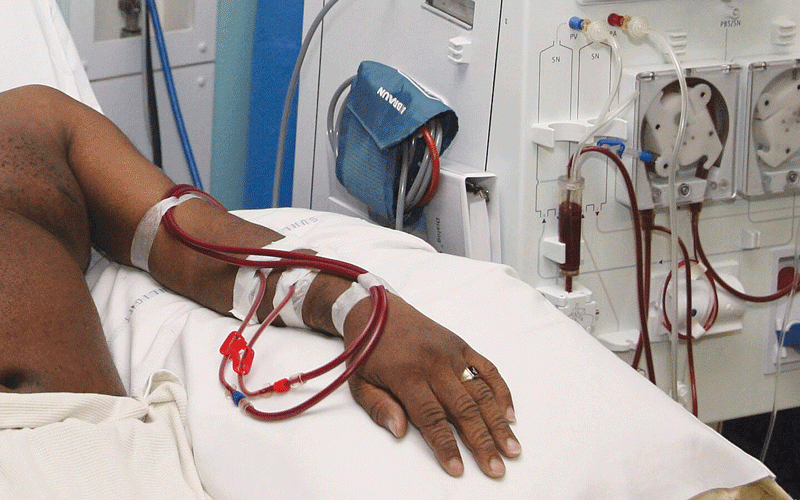
FOR many women, the birth of a child is a momentous occasion, the culmination of months of anticipation, hope and love.
But for those who have given birth via Caesarean section, the joy of welcoming new life often comes with a lingering shadow.
Ruvimbo Motsi (23), an expecting mother, sat on the edge of a hospital bed after more than 15 hours in “labour”.
The doctor, a kind-faced woman with a reassuring smile came in, gently breaking the news she would undergo a Caesarean section procedure the following morning.
Motsi’s heart pounded. Caesarean section! she thought to herself.
She had always dreamt of a natural birth, of the intense but rewarding experience of bringing her child into the world on her own terms.
But now, faced with the reality of surgery, she felt a wave of fear engulfing her.
“I was afraid, I shivered and prayed the whole night. Up to now, I don’t know if the wound will fully heal since the baby is just three weeks old,” Motsi recalls.
In a small Mukarakate village in Murewa, Mashonaland East province, 32-year-old Marjory Choto sits in her modest home, cradling her three-year-old son.
The boy is healthy and active, a source of endless joy for her.
But Choto’s, smile hides a constant struggle.
“I gave birth to my son via Caesarean section because of complications,” she says, her voice barely above a whisper.
“But even now, three years later, I still feel pain in my abdomen. It’s not just the scar, it’s deep inside, like a knife that never really left.”
Across Zimbabwe, many women who undergo, the Caesarean section procedure report persistent pain, numbness and discomfort years after the operation.
These symptoms often interfere with daily activities, making it difficult for mothers to care for their children and themselves.
In the bustling city of Harare, 28-year-old Linda Moyo shares a similar story.
After delivering her first child through a Caesarean section procedure, Moyo expected recovery to be swift.
But as weeks turned into months, she realised that the pain was not going away.
“I thought I would be back to normal after a few weeks, but it’s been two years and I still can’t do certain things,” Linda says.
“I struggle to lift heavy objects and sometimes the pain is so bad that I have to stay in bed all day. It’s frustrating because I want to be there for my child, but my body won’t let me.”
Obstetrician and gynaecologist Tafadzwa Nhekate says while Caesarean section procedures are often necessary to ensure the safety of both mother and child, they are not without risks.
“Caesarean section procedures are major surgeries and, like all surgeries, they come with potential complications,” he says.
“One of the most common long-term issues we see is chronic pain at the incision site or in the surrounding tissues. This pain can be caused by nerve damage, scar tissue, or even adhesions, where tissues stick together in ways they shouldn’t.”
Nhekate adds that while some women recover quickly, others may experience pain for years.
Unfortunately, the long-term effects of Caesarean section procedures are often overlooked in discussions about maternal health.
“In our society, there is a tendency to focus on the immediate outcome — the birth of a healthy baby. But we also need to consider the mother’s long-term well-being,” he says.
“Chronic pain can have a significant impact on a woman’s quality of life, affecting her ability to work, care for herself and the child.”
Globally, Caesarean section rates have been steadily increasing over the past few decades.
According to the World Health Organisation the global average Caesarean section rate was 23,1% in 2020.
However, there are significant regional variations, with rates in high-income countries being substantially higher than those in low-income countries.
In Zimbabwe, the Caesarean section rate has also been on the rise.
While official statistics vary, many experts believe that the rate is currently above the global average.
Health professional Mlungisi Ndebele said the increase in the number of operations could be attributed to a number of factors.
“As more women have access to prenatal care and delivery services, there has been a corresponding increase in the number of Caesarean sections performed,” he says.
“Older women are more likely to require Caesarean sections due to factors such as increased risk of complications and previous Caesarean section procedures.”
Ndebele says in some cases, Caesarean section procedures are medically necessary to protect the health of the mother or baby.
In Zimbabwe, as in many other countries, some private hospitals have been accused of performing unnecessary Caesarean section procedures in order to increase revenue.
“I was told that a C-section was the safest option for me, even though I had a normal pregnancy,” says Nancy Chikanga, a mother of two from Bulawayo.
“Later, I learned that some private hospitals offer incentives to doctors for performing more C-section procedures.”
Gynaecologist Ethel Munoka says the long-term pain experienced by many women after procedures can be attributed to many factors.
“Bands of scar tissue can form in the abdomen after surgery, causing pain and discomfort. The surgical incision can sometimes damage nearby nerves, leading to chronic pain,” she says.
While there is no definitive cure for these conditions, Munoka says it is important for women to have early diagnosis and appropriate management.
“It’s crucial for women who experience persistent pain after a Caesarean section procedure to seek medical attention,” she says.
“There are varieties of treatment options available, including pain management techniques, physical therapy and in some cases, surgery.”











